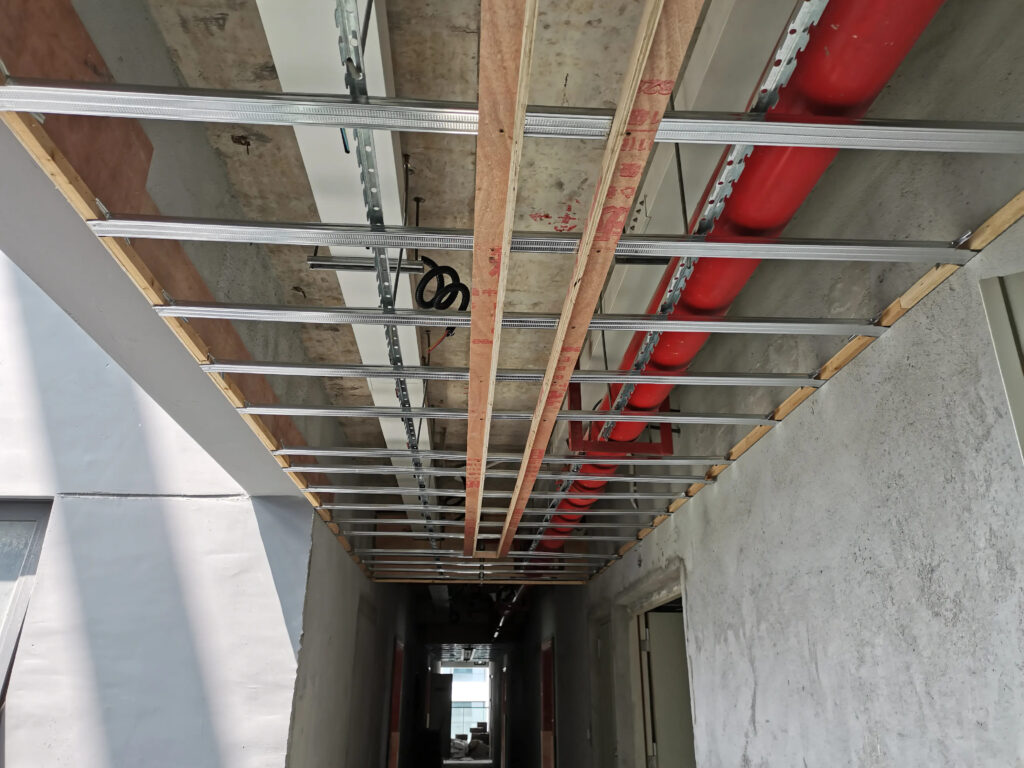
Light steel profiles, a vital component in commercial and residential structures, are emerging as a prevalent element in contemporary architecture. This short article will examine its various applications and benefits.
Top-tier steels often use zinc-coated sheets as the base material. Nevertheless, it is crucial to recognize that this procedure can trigger environmental pollution, exacerbated by harmful substances & impurities in these treated steels. Unfortunately, by-products generate significant emissions, effluents, and residues, all of which can have a severe impact on our planet when ignored.
Given today’s emphasis on environmental protection, the manufacture of galvanized sheets warrants stringent environmental protection measures. These include state-of-the-art technology and machinery, minimized waste generation, and appropriate waste disposal protocols. It is incumbent on both the public and private sectors to oversee these procedures, aiming to comply with eco-friendly standards while countering environmental degradation. Preserving the environment is not just a duty, but a necessity, including the production of galvanized sheets.
Outdoor conditions provide strong corrosion resistance for light steel profiles. These are well-suited for demanding applications such as waste disposal piling, landfills, and riverbank revetments. However, continuous exposure to harsh environmental factors such as seawater fog, acid rain, or high humidity can compromise their durability. Therefore, it is vital to take these variables into account when designing and implementing, ensuring that appropriate protective measures are employed for longevity.
Specifications for light steel profiles include lengths of 3000 and 4000 millimeters, widths ranging from 50 to 100 millimeters, and robust thicknesses of 0.4 to 1.2 millimeters. These properties demonstrate considerable flexibility in both architectural and industrial applications.
To optimize results, light steel profile specifications should be tailored to unique needs. These details often vary by manufacturer and model, underscoring the need for product research before purchasing. The key to the enduring popularity of light steel profiles in construction is their minimal weight. This allows substantial cost reductions in material handling, assembly, and overall project performance. As a result, the cost of implementing decoration in corporate buildings is substantially reduced – a benefit that retains consumer interest.
In architectural engineering, the simplicity and versatility of light steel profiles make them crucial in contemporary construction. These profiles exhibit admirable characteristics such as user-friendliness, and adaptability – diminutive yet resilient, lightweight yet strong, easy to manipulate, sculpt effortlessly, and assembled according to different design needs.
In the construction of light steel profiles, structural stability is paramount. These versatile profiles seamlessly integrate with many construction materials through screws or rivets. The surface finish of these profiles is enhanced with an impregnable rust-resistant treatment for increased durability and longevity. Light steel profile construction offers exceptional versatility and effectiveness. Maintenance costs are surprisingly cost-effective when compared to other materials, as damaged or twisted sections can be easily replaced instead of requiring full recasting. In addition, increased fire resilience reduces the risk of catastrophic fire effects.
Light Steel Profiles demonstrate easy implementation and care, providing considerable cost and time savings, and enhancing overall construction efficiency and safety.
Essentially, the assessment of the fire protection capacity of a light steel profile depends primarily on the raw materials used in fabrication and associated fireproofing practices. Typically, these profiles consist of standard hot-dip galvanized steel strips, enhanced by added stress and crack resistance treatments for increased strength and combustion resistance. Surface treatments such as flame retardant coatings further reduce the hazards posed by high temperatures. These actions ensure that light steel profiles exceed industry standards for fire safety, providing substantial reassurance for both residential and commercial users.
In light steel profiles, their lack of complete fire resistance highlights the need for evaluation in a variety of circumstances. The effectiveness of flame retardants can be compromised if their surfaces are inadequately coated or the coating lacks durability. In addition, improper installation presents hazards, as gaps between components or weak bonding allow fire to spread. Rigorous adherence to design and installation protocols is critical to mitigating these risks.
A strong focus is needed when selecting superior materials for the construction and use of light steel profiles. After installation, strict adherence to structured guidelines is essential for optimal safety, enhanced structural integrity, and occupant protection. Subsequently, regular inspection of the profile’s fire protection capacity is essential. By ensuring adherence to these factors, property owners can ensure optimal fire preparedness.

